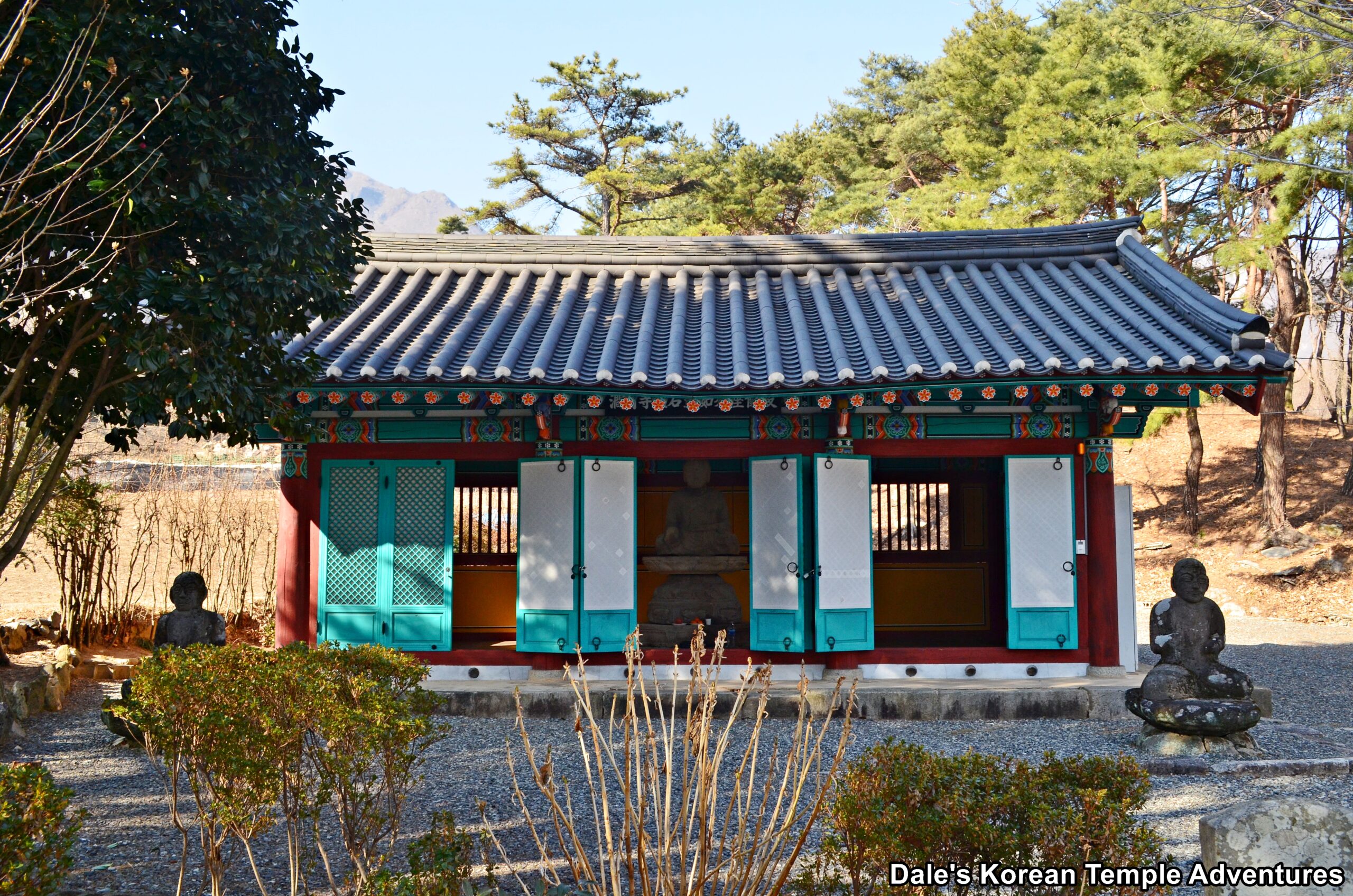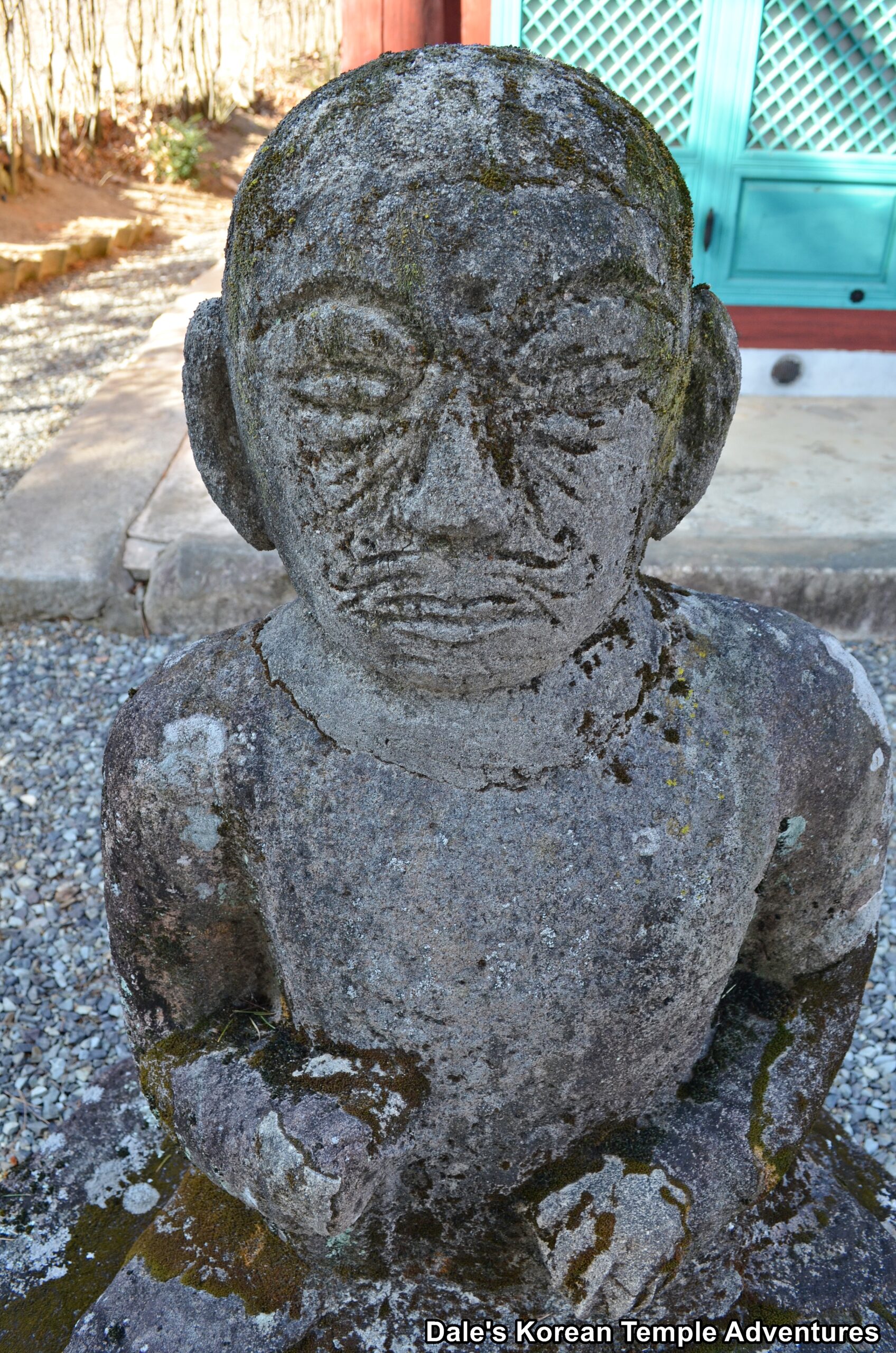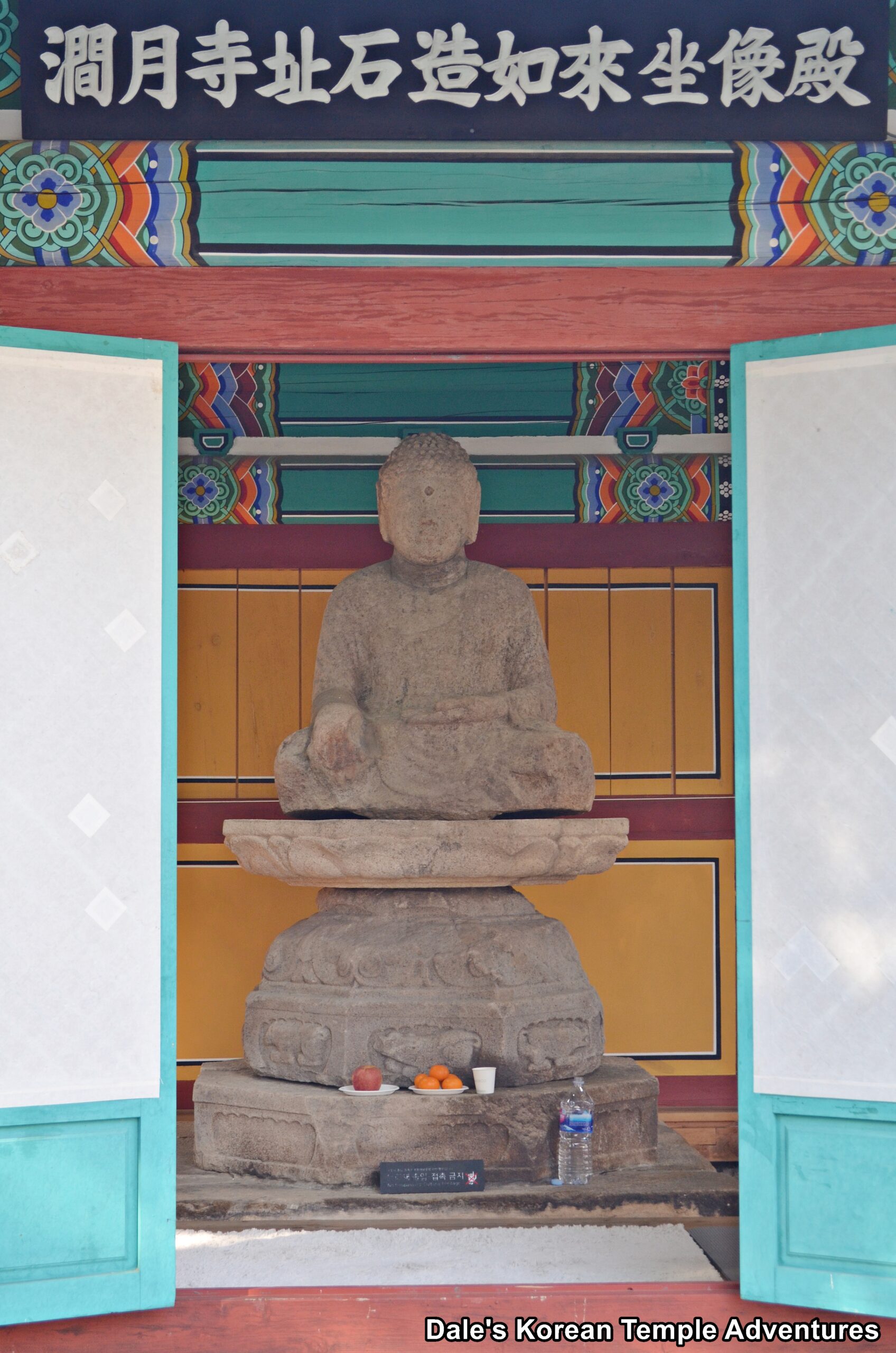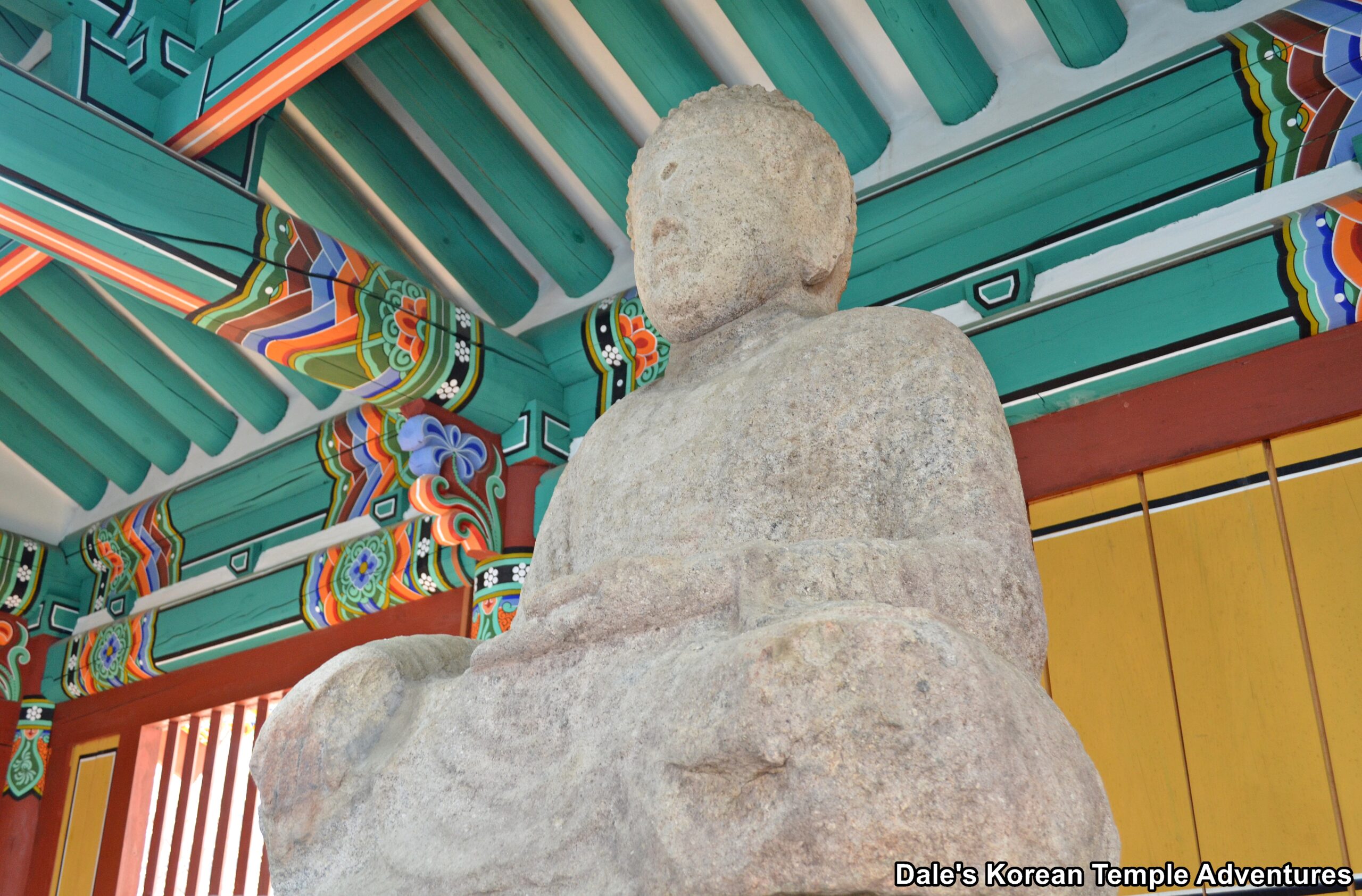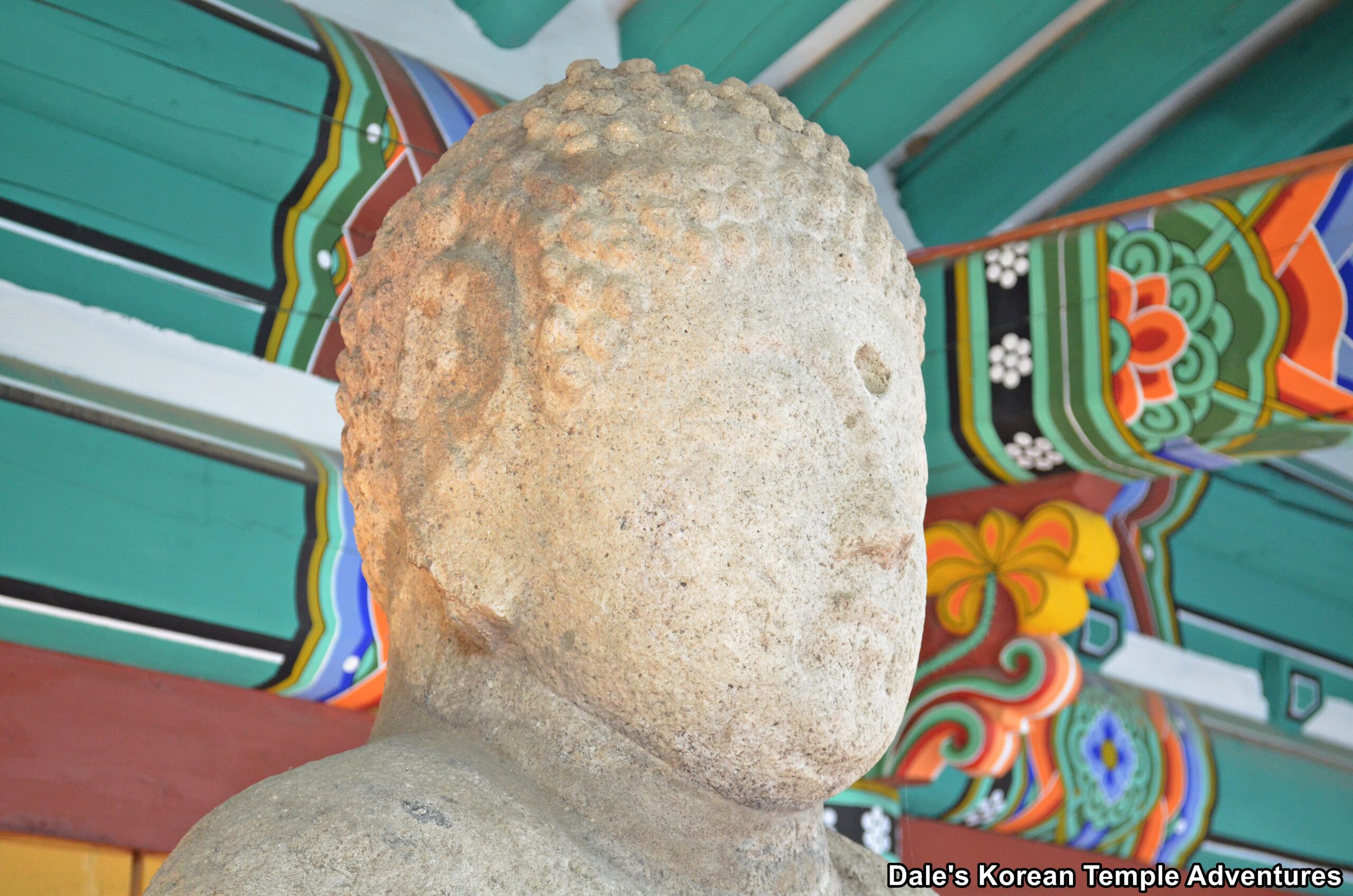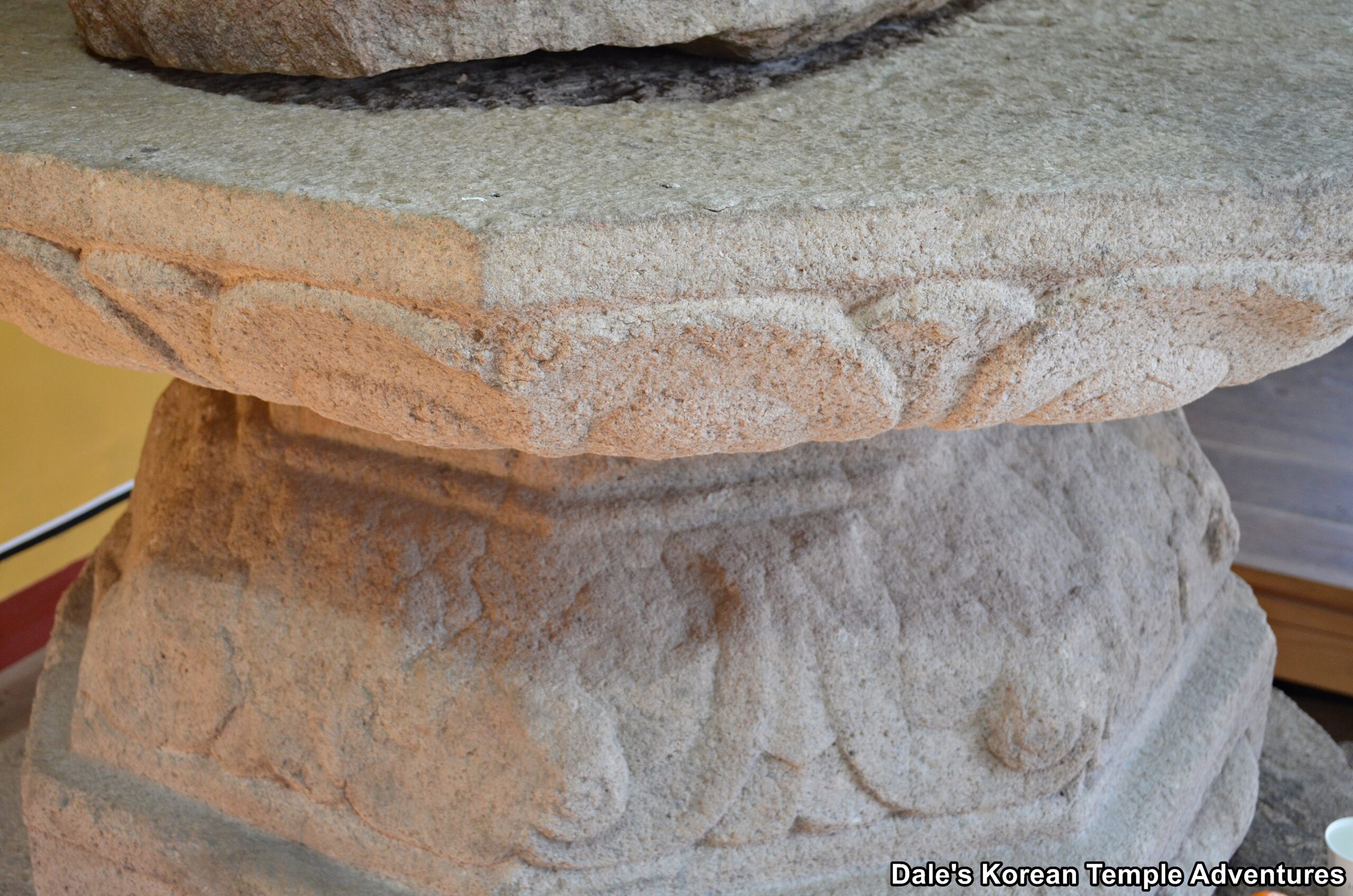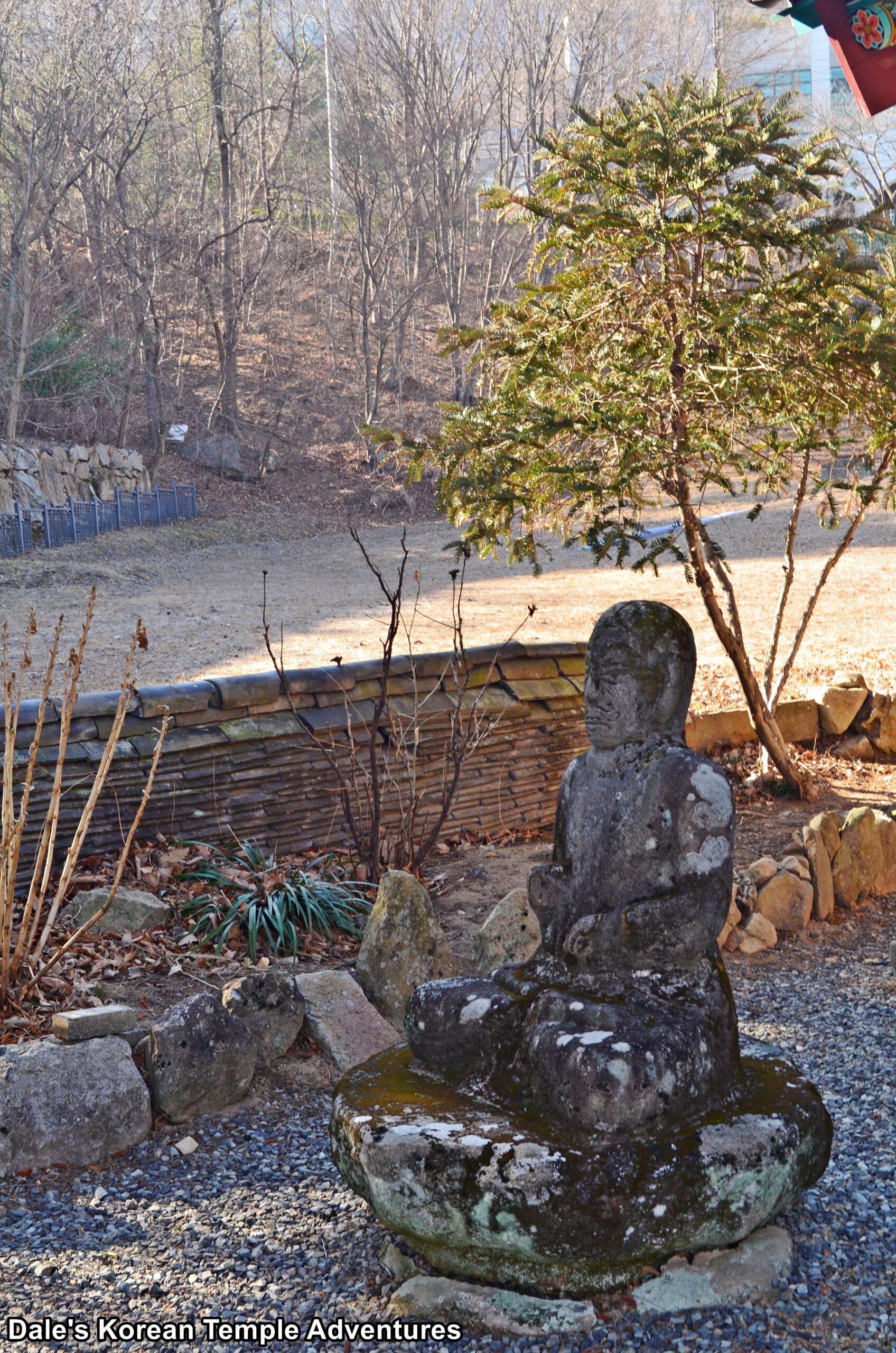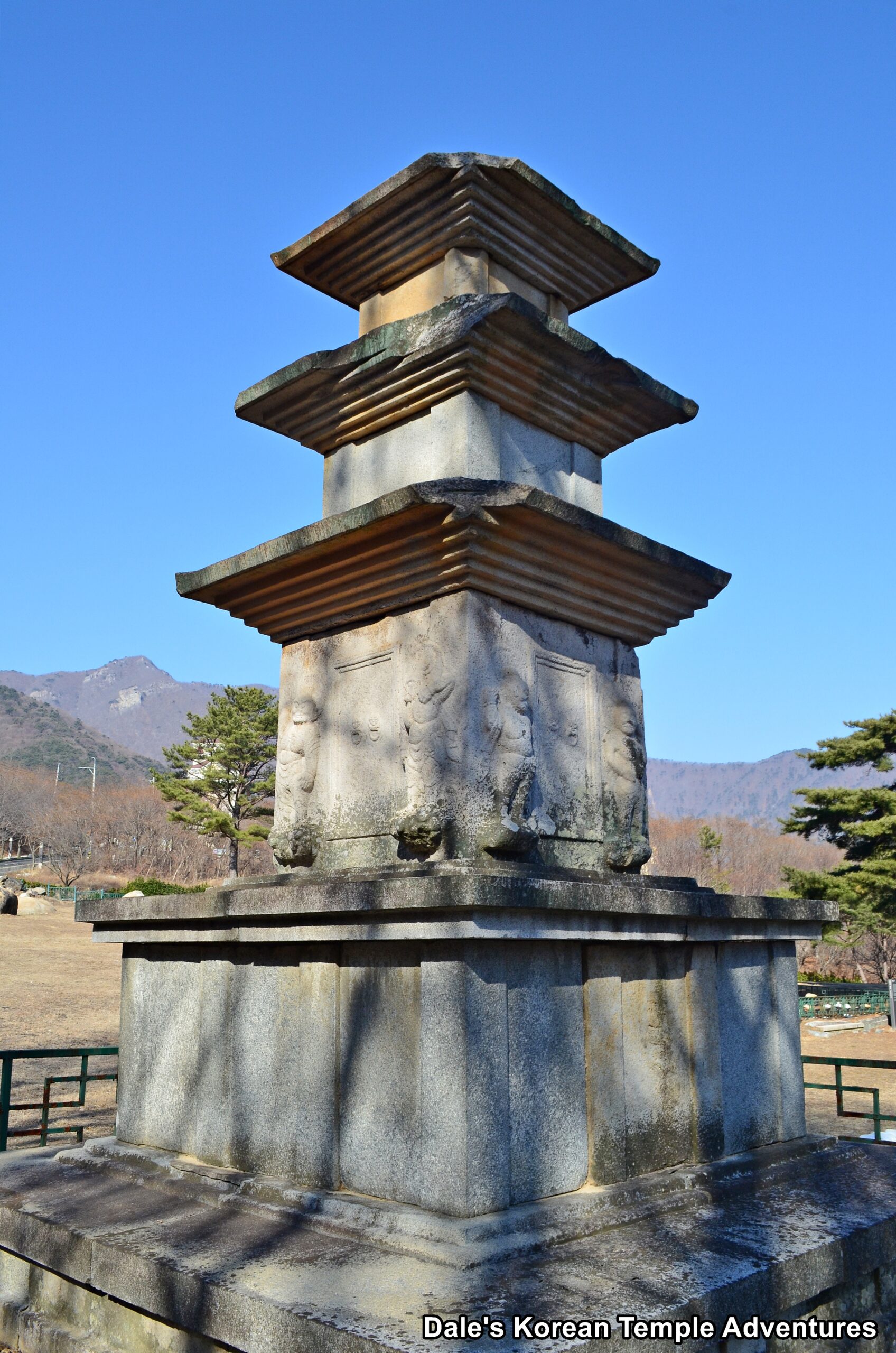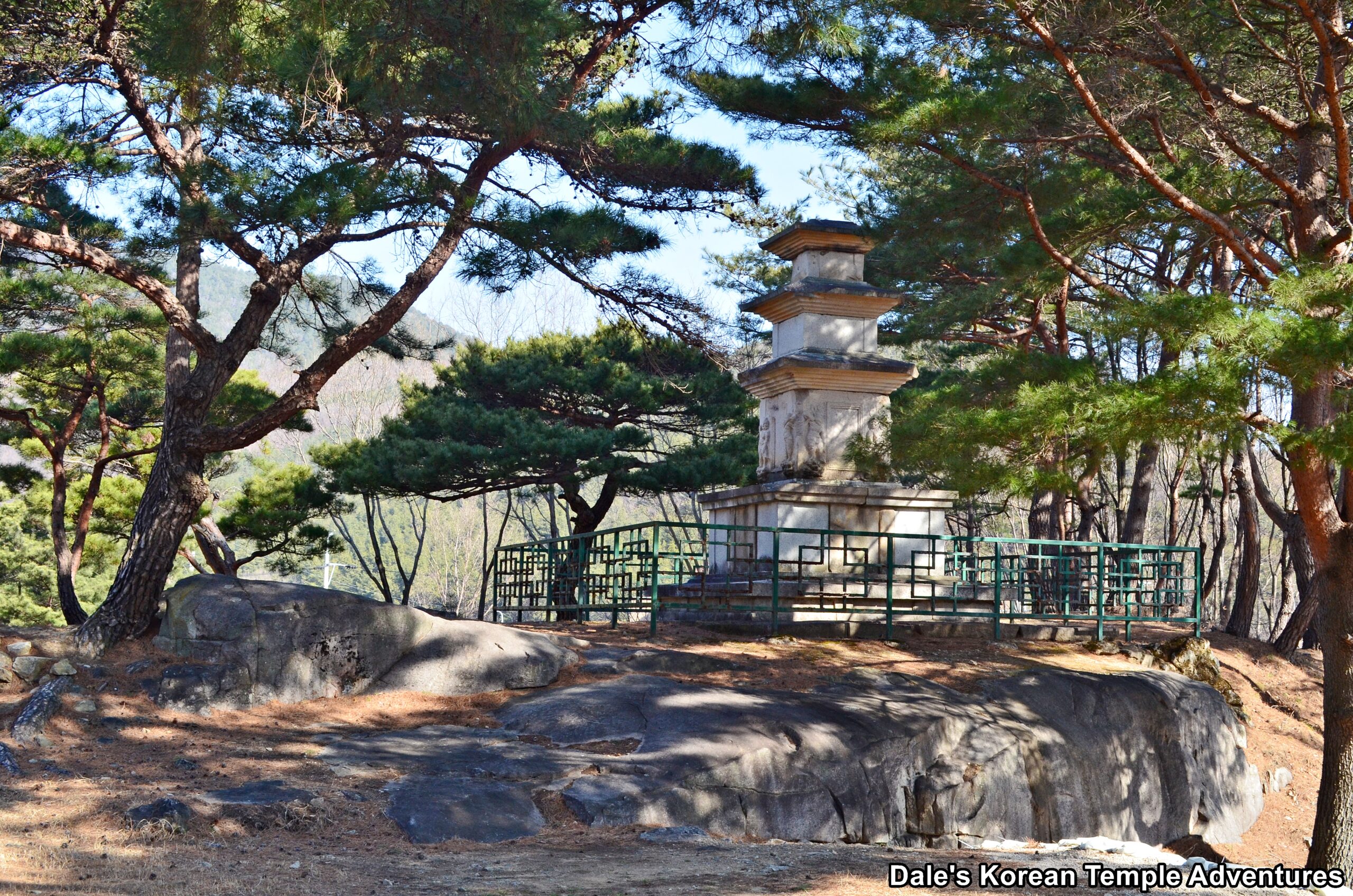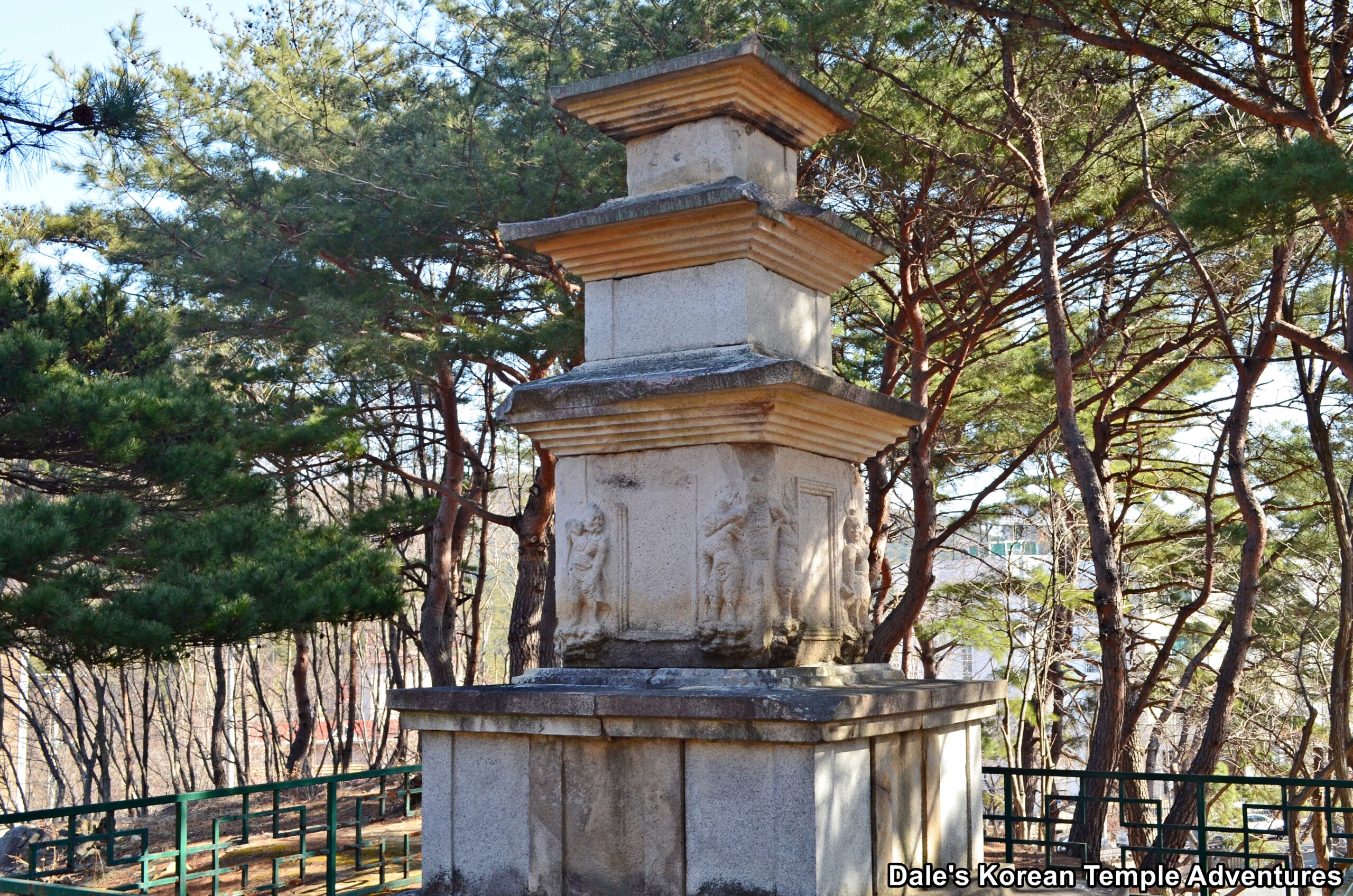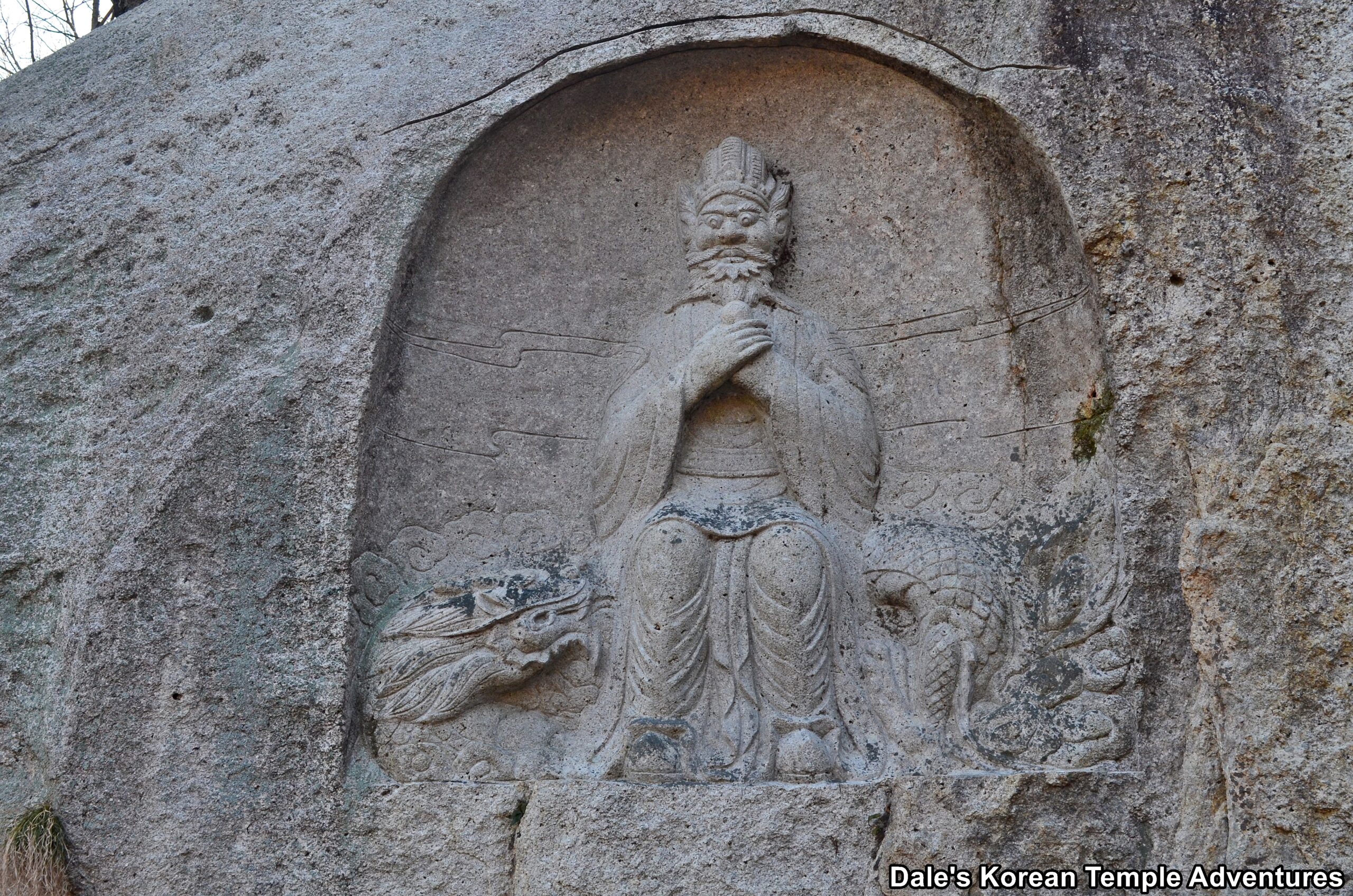Ganwolsa-ji Temple Site – 간월사지 (Ulju-gun, Ulsan)
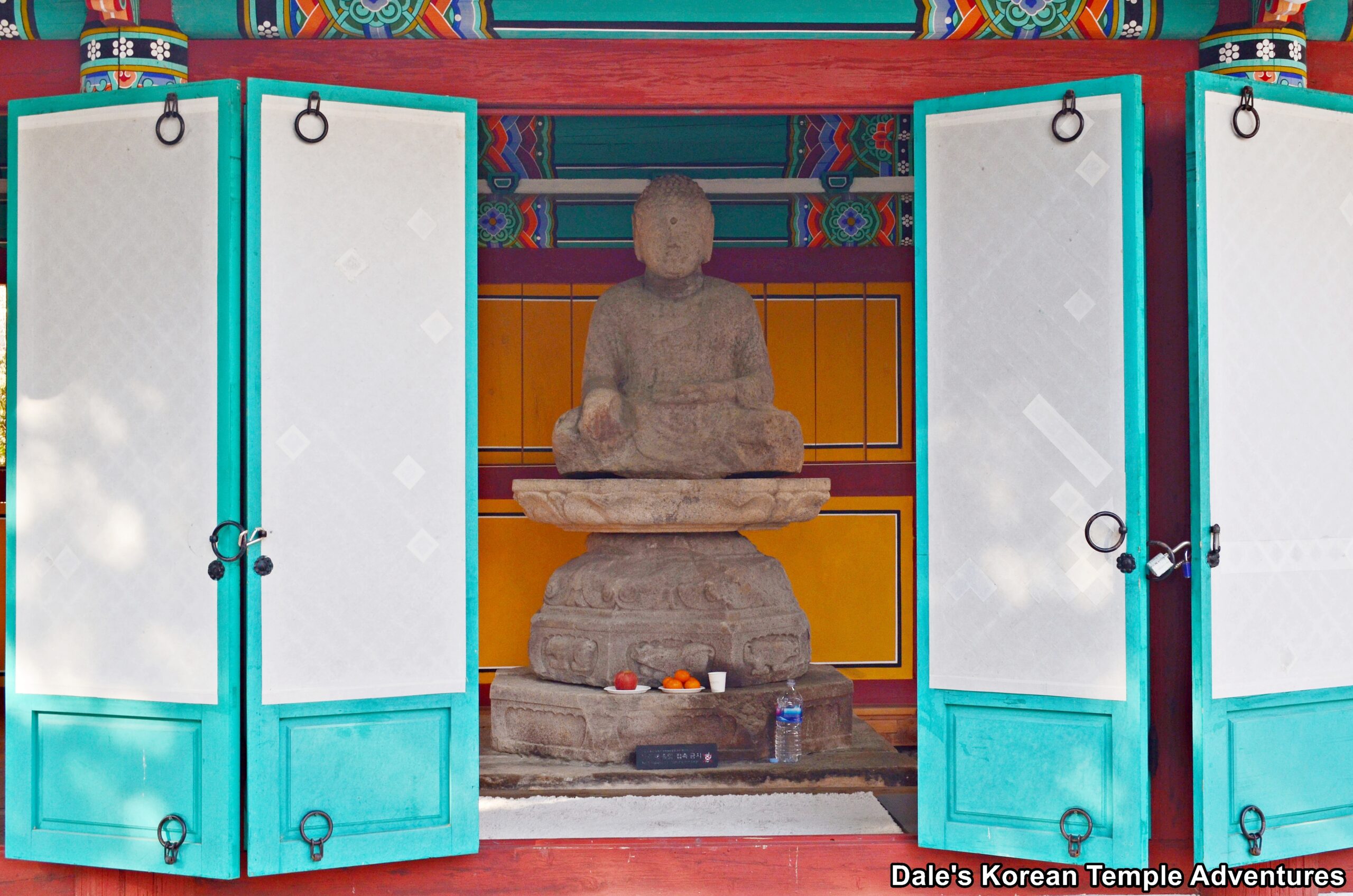
Temple Site History
The Ganwolsa-ji Temple Site is located in Ulju-gun, Ulsan in the eastern foothills of Mt. Ganwolsan (1,069.1 m) up a long valley. It’s believed that the original Ganwolsa Temple was first built by Jajang-yulsa (590-658 A.D.) during the reign of Queen Jindeok of Silla (r. 647-654 A.D.). Later, the temple was destroyed by the invading Japanese during the Imjin War (1592-1598) in 1592. Ganwolsa Temple would eventually be rebuilt in 1634 during the mid-Joseon Dynasty (1392-1910). The temple would last until 1836, when it seems as though the temple was abandoned after a large crop failure in the area and subsequent famine according to the Eonyang-hyeon Hojeokdaejang, or The Census Register of Eonyang-hyeon in English.
After the temple was closed in the late-Joseon Dynasty, the surrounding area, including the temple site, were reclaimed by nature and repurposed into working fields. As a result, the exact size of the former temple is largely unknown. In 1984, Dong-a University conducted an excavation survey of the temple site. And this was followed in 2016 by the Cultural Heritage Administration, or “CHA” for short, conducting a full-scale excavation survey of the Ganwolsa-ji Temple Site. From the latest archaeological work conducted on the site, and through the examination of the Geumdang-ji (Main Hall Site), the north and south pagodas, and statues found at the temple site, it’s believed that the Ganwolsa-ji Temple Site dates back to at least the mid-8th century.
Originally, the Ganwolsa-ji Temple Site was designated as a historic site in Gyeongsangnam-do on August 2, 1983. This subsequently changed on October 9, 1997, when Ulsan became its own autonomous city, the Ulsan Metropolitan City, on July 15, 1997. Now, the Ganwolsan-ji Temple Site is known as a historic site in Ulsan.
Lastly, there is one Korean Treasure at the Ganwolsa-ji Temple Site. It’s the Stone Seated Buddha at Ganwolsa Temple Site, which is Korean Treasure #370.
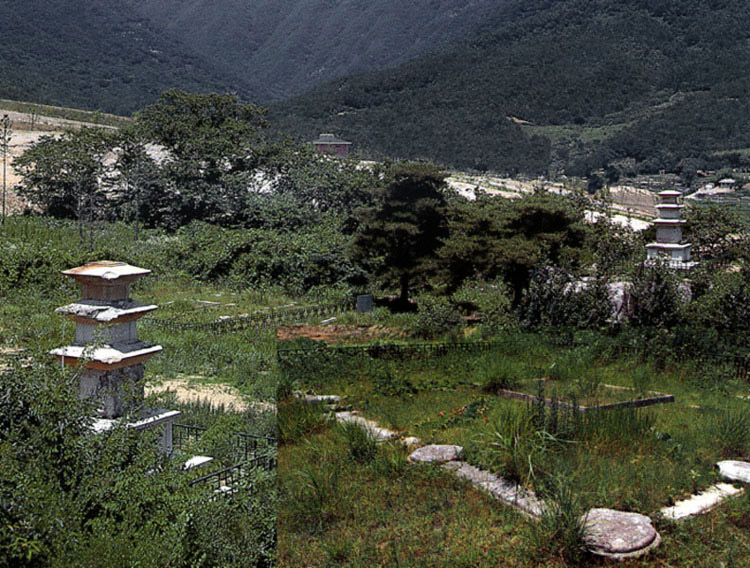
Temple Site Layout
When you first enter the temple site grounds, you’ll notice a tourism booth to your left and the site’s bathrooms to your right. Straight ahead of you, and at a bit of an angle, is the newly built shrine hall that now houses the Stone Seated Buddha at Ganwolsa Temple Site. Out in front of the pavilion are a pair of book-ending statues that look just as equally old as the Korean Treasure housed inside the neighbouring pavilion. But for as successful as the artistry is on the Stone Seated Buddha at Ganwolsa Temple Site, the two book-ending statues are a little less successful with their caricature-like faces. It’s unclear whether the statues are meant to represent a Buddha, a Nahan (The Historical Disciples of the Buddha), or a monk, but they’re just not that great. It should be noted that while the bodies of these statues appear to date back to the Silla Dynasty, the faces seem to be a much later addition after the original heads were lost. The current heads to these statues appear to date back to the late-Joseon Dynasty, which gives the statues their caricature-like appearances. And to the right of the pavilion and the twin statues is an older budo (stupa).
Stepping inside the newly built pavilion that houses the Stone Seated Buddha at Ganwolsa Temple Site, you’ll be welcomed by a ninth century Silla-era statue of a seated Seokgamoni-bul (The Historical Buddha). The statue is slightly damaged; but overall, it’s well preserved. On top of the head, there is a slight protrusion known as a usnisa, which is meant to represent the Historical Buddha’s supreme wisdom. But with curly hair, the topknot is hard to discern. As for the face of the statue, it has a smooth, plump face that appears serene. It has long eyes and small ears. Overall, it has a very human quality to its face. The robe that adorns the Buddha is thin, and it covers his shoulders. The statue rests upon a stone lotus bud platform. And the base of the platform that supports the statue is surrounded by various guardians.
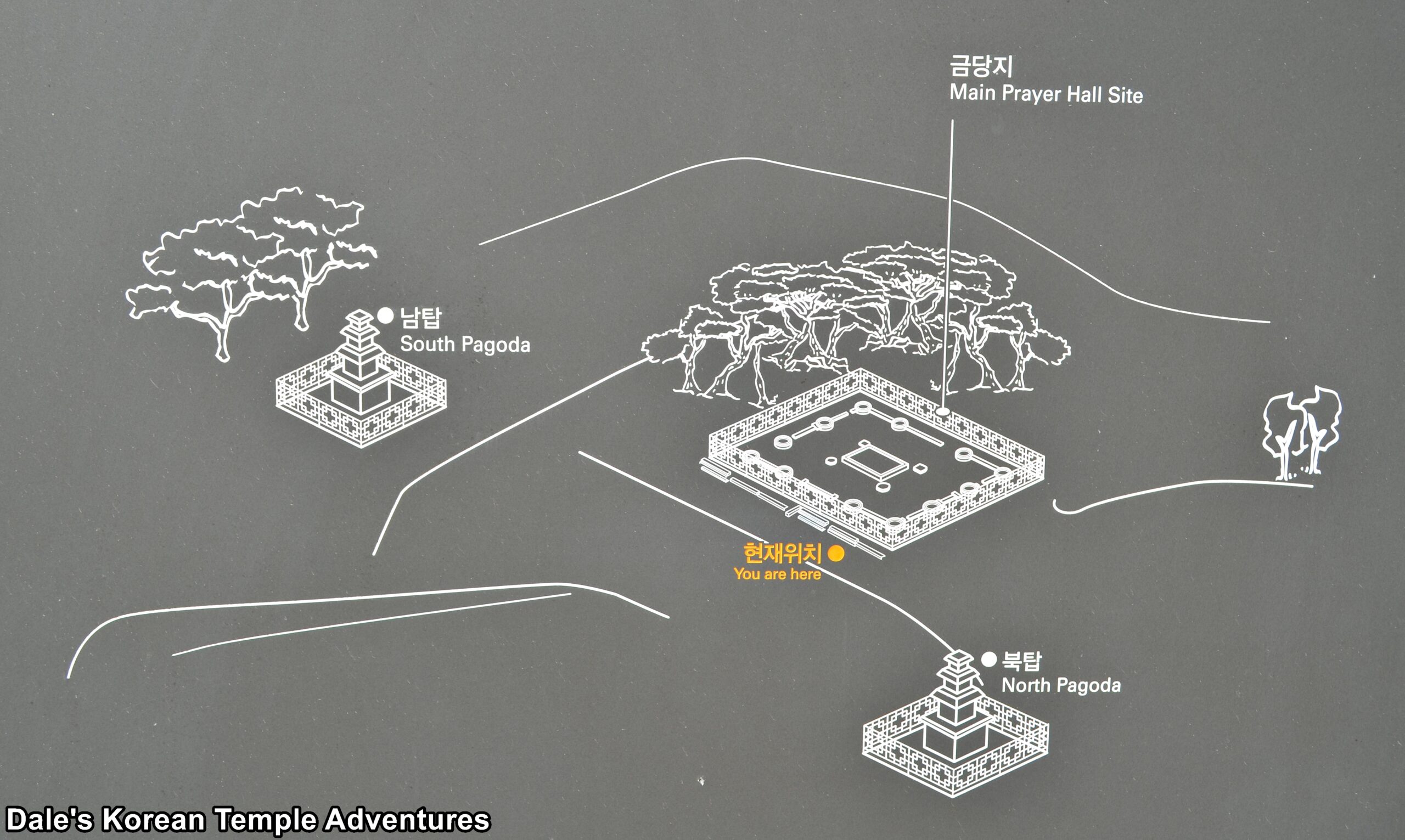
To the left of this fenced-off enclosure, and up the hillside, are the North and South Pagodas. Officially, these two pagodas are known as the Ganwolsa-ji Temple Site North-South Three-Story Pagodas. The pagoda to the left, and up the steeper hillside, is the South Pagoda. It’s believed that both pagodas date back to the 8th century during Unified Silla (668-935 A.D.). The three-story pagoda rests atop of stylobate with pillar patterns around its surfaces. The base of the pagoda remains simplistically unadorned. As for the first body stone of the stone structure, it has reliefs of large doors and a pair of Geumgang-yeoksa (Vajra Warriors) on either side of the entryways. All four sides of the first body stone are adorned with the same relief. The other two body stones, the second and third story, remain unadorned. Additionally, the entire finial is missing from atop the South Pagoda.
Across the open field, past the Geumdang-ji (Main Hall Site), and running parallel to the South Pagoda is the North Pagoda of the Ganwolsa-ji Temple Site North-South Three-Story Pagodas. The North Pagoda, unlike the South Pagoda, is partially hidden in a cluster of trees and perched atop a rocky knoll. Both the North and South Pagodas are almost identical in design with only minor differences in their reliefs. The two pagodas, rather uniquely, are positioned slightly higher than that of the former main hall at the Ganwolsa-ji Temple Site.
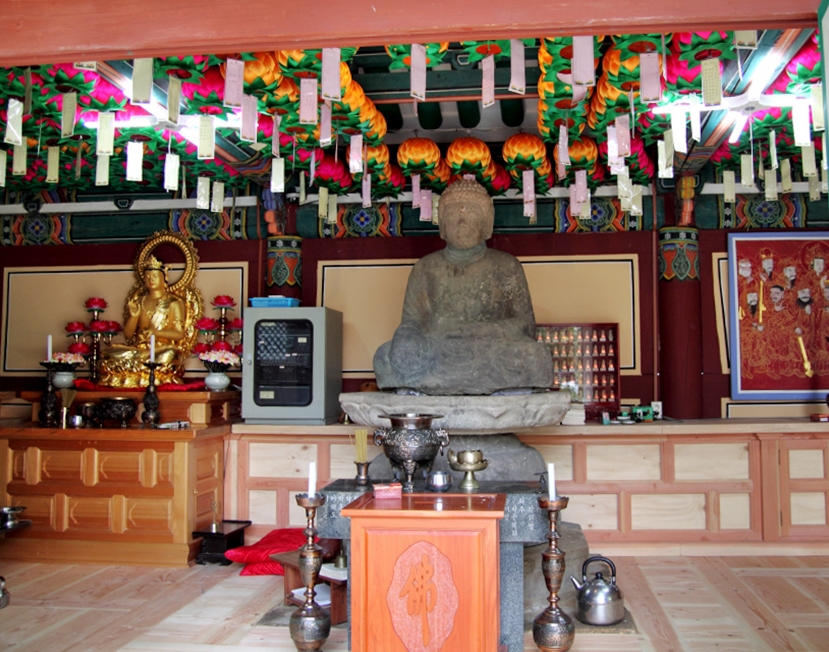
Backtracking a bit, you’ll find the squarish former location of the main hall, the Geumdang-ji (Main Hall Site). The site is now covered with a black tarp and stones to hold the tarp in place after the CHA excavation. However, even though the main hall site is both tarped-off and fenced-off, you get a good idea of the size of the former main hall.
To the rear of the Geumdang-ji (Main Hall Site) are a collection of rocks, presumably from the last excavation. Rather interestingly, behind the North Pagoda, and down from the large collection of rocks, is an abandoned shrine hall. This is where the Stone Seated Buddha at Ganwolsa Temple Site was formerly housed. The historic statue was housed alongside an image of Gwanseeum-bosal (The Bodhisattva of Compassion) and a Shinjung Taenghwa (Guardian Mural). Not sure why this shrine hall was abandoned, but it has been. The last thing that visitors can enjoy at the Ganwolsa-ji Temple Site is a circular relief of Yongwang (The Dragon King) to the front left of the former shrine hall.
How To Get There
From Ulsan train station, there’s a bus stop right in front of the station. From this bus stop, you’ll need to take Bus #304 or Bus #323. You’ll need to get off at the bus stop named “Ganwol-ipgu – 간월입구.” From here, you’ll find the temple site.
Or you can simply take a taxi to get to the Ganwolsa-ji Temple Site. By taxi, it’ll take 20 minutes over 8.7 km, and it’ll cost you 9,300 won (one way). This might be a better alternative, if you’re traveling in a group.
Overall Rating: 6/10
The entire former temple site has a beautiful serenity to it. Almost immediately upon entering the temple site grounds, you’ll find a newly built shrine hall that houses the beautiful Stone Seated Buddha at Ganwolsa Temple Site. This Korean Treasure is joined by the Ganwolsa-ji Temple Site North-South Three-Story Pagodas, which, rather surprisingly, aren’t at least Korean Treasures. Perhaps one day they will be after the recent excavation.
